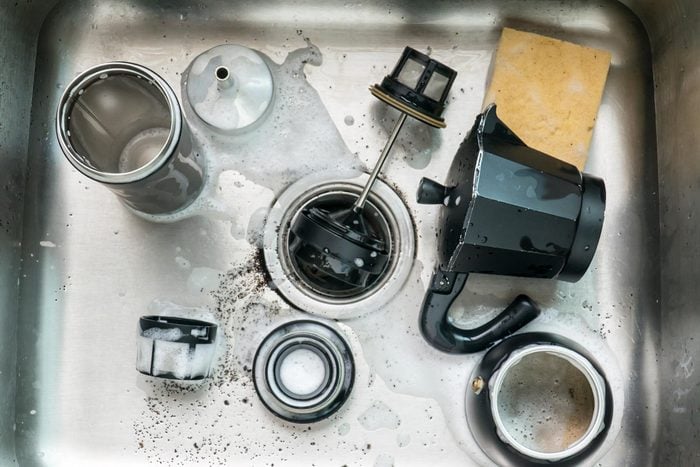
You’re not cleaning or descaling it
If you read that and instantly asked out loud, “I’m supposed to clean it?” Then guess what? First of all, you’re just like us. And second of all, you could be shortening the life of your coffee maker. The extra gunk and dust that gets into your machine can cause overheating, calcium deposits, and even mould. Have a cleaning schedule for your machine and stick to it.
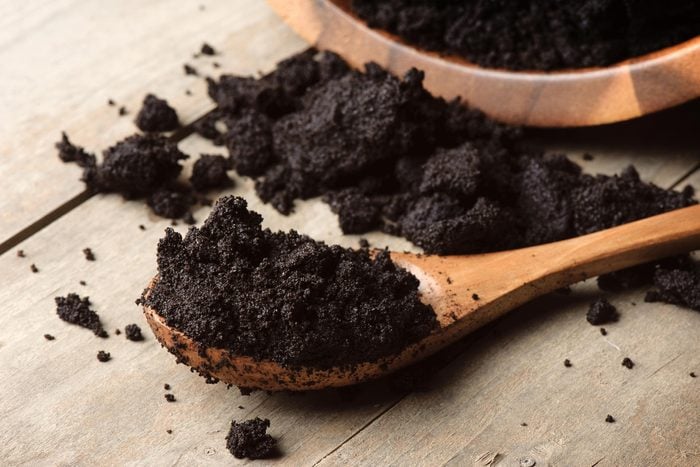
You’re leaving old grounds in
You brew the pot, pour your cup, and run out the door, leaving the old, wet beans for the next person who uses it—or you, tomorrow. Not a huge deal, right? Unfortunately, not so much. “Always clean out the wet coffee grinds as soon as you’re done brewing,” says Dan Scalco, creator of Food Box HQ. “The warm or damp conditions create a prime environment for mould and bacteria to collect.” Not only can this lead to the premature breakdown of your hard-working coffee maker, but it can also make you sick.
Find out the best way to clean a coffee maker.
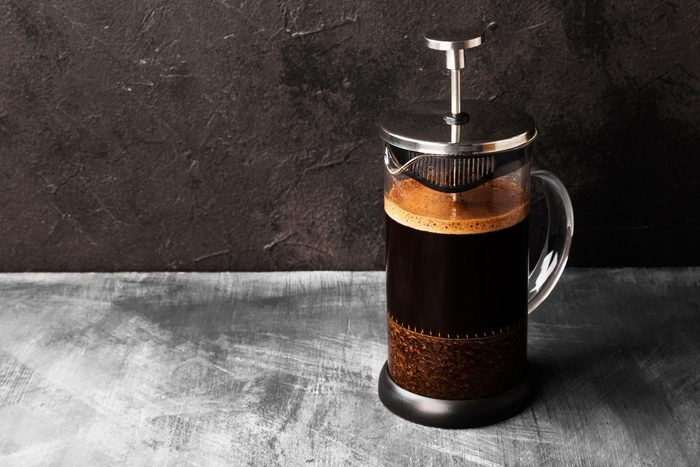
You’re using the wrong grind
Different pots are made for different levels of grind. Using the wrong sort can damage your coffee maker. For example, if you prefer cold brewing or using a French press, you’ll want a coarser grind, and with drip pots, or a café solo brewer, you’ll want more of a medium grind. A finer grind is right for pour-over cones, espresso machines, or percolators. Using the wrong kind of grind can make your machine work harder than it’s designed to.
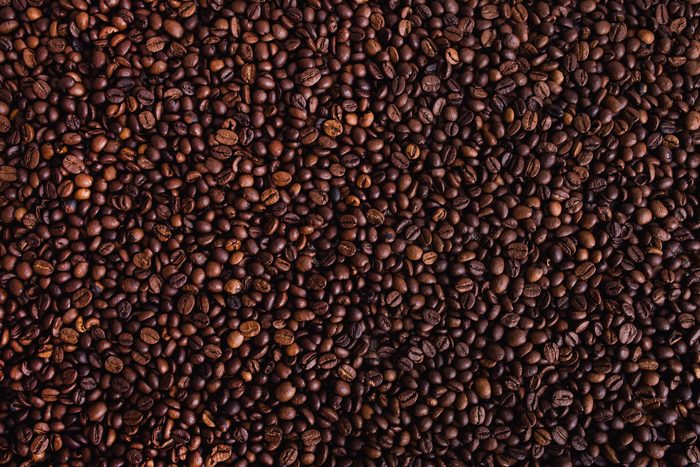
You’re using oily beans
Oil from inside the raw coffee bean is brought to the surface during the roasting process. All beans will have some level of oil on them, but some are more oily than others. The darker your roast, the more likely your beans will have a bit of extra oil on them. You’ll be able to tell by sight—look for the rich, shiny coating. Some people prefer that flavour, while others prefer a drier bean. One isn’t necessarily better than the other by flavour, but if you’re looking for a longer lasting coffee maker, you might want to take note. Some machines—espresso machines in particular—don’t do well with the excess oil. Espresso Machine Experts, a coffee machine repair company, recommends looking into what level of oil and roast type works best for each coffee maker and getting the coffee maker that works best for your favourite flavour of beans.
Check out the best coffee roasters across Canada—one in every province.
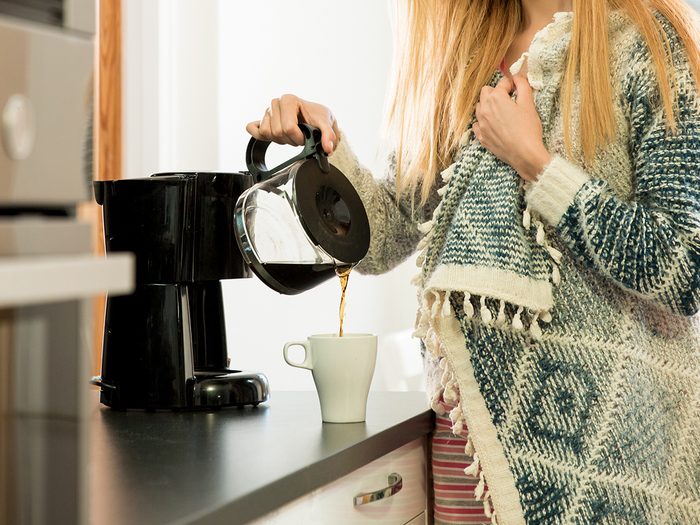
You leave it on when it’s not in use
Not only does leaving it on all day waste energy, but it can also shorten the life of your coffee machine in the long term. The excess use of energy and continual electricity flow will wear away at your machine’s mechanics. Luckily for those of us who are a bit more scatterbrained before we’ve downed our morning cup, many modern coffee machines automatically turn off when they are not in use.
Check out 10 alternative coffee sweeteners.
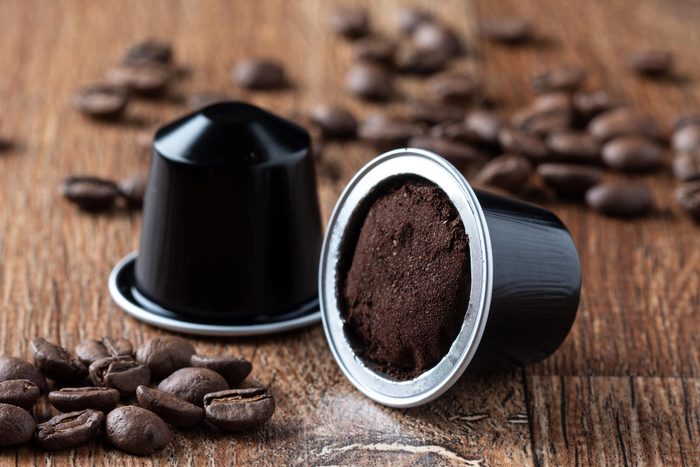
You’re using the wrong size coffee pod on your single cup brewer
Turns out those pods aren’t as interchangeable as we thought. Each brand of coffee pod you buy is actually a different size. While many of them have evolved to sizing that fits multiple coffee machines, there are several that are not compatible with all machines. Check your K-cups, Nespresso pods, or other single serve coffee pod to be sure it fits your machine before you force it in there.
Make sure you avoid these common coffee brewing mistakes.
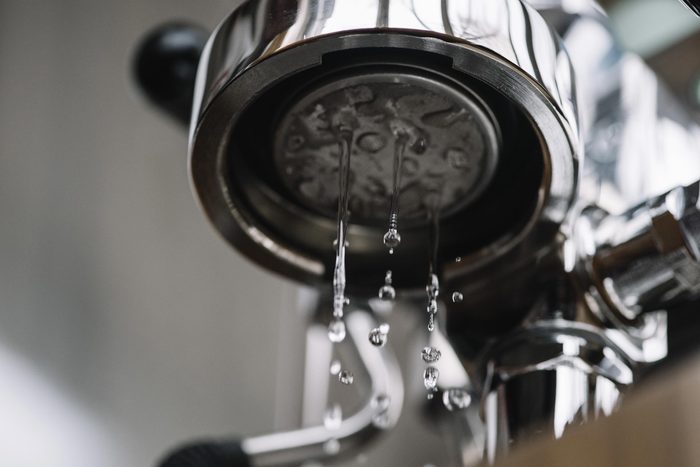
You’re underfilling the water tank
When there isn’t enough water in the water tank of your machine, you can run into some big problems. Regardless of whether or not your water tank is dry, once you press that “brew” button, your tank will pump for the preset amount of time. That means that if you underfill your tank, the pump will draw air into the system which puts added pressure on the mechanics and can lead to problems down the line.
Here’s where you’ll find the best coffee in Canada.